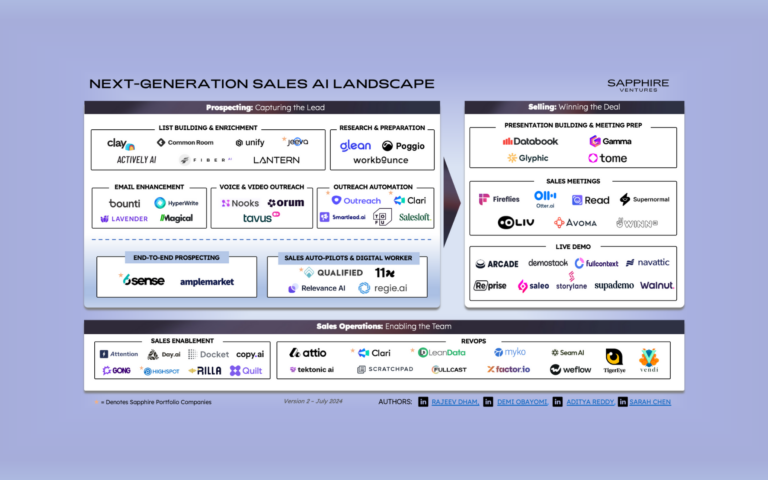No one could have predicted that an international healthcare crisis would have caused the economic downturn we find ourselves in. But one thing is for certain, we knew a slowdown would come. The markets have been performing well for too long, according to all historical benchmarks. And when that happens, as history shows, a financial reset will typically take place.
That doesn’t change the fact that every economic downturn is painful. People lose their jobs, companies fold and morale takes a hit. But as with every recession, society adapts and perseveres. It will take some time to get through this hump, but on the other side of it new jobs will be created, groundbreaking companies will emerge and life will resume.
Since the onset of the pandemic, we’ve been in close contact with the CEOs of our portfolio companies. In conversations with these seasoned leaders, a few of them shared learnings from previous recessions, including advice to weather the storm and what they fear most, which we wanted to share here.
Ramin Sayar, CEO of Sumo Logic
Sumo Logic is is a cloud-based machine data analytics company focusing on security, operations and BI use cases

I, like most of the Sumo Logic management team, have lived and worked through the dotcom crash and the 2008 financial crisis, which gives me and my team a real appreciation for just how difficult it can be to not just survive, but truly thrive and grow during these periods.
Fear is fueled by the unknowns, and the COVID-19 crisis is full of them. But, if there is anything that we have all learned from the past crisis is that you have to take action immediately. At Sumo Logic, we activated an Emergency Management Committee, which is a cross-section of leaders and functional experts. We did this early on and launched three parallel workstreams:
- A team that addresses the health and productivity of our employees.
- Another that focuses on the health of our service and the customers we serve.
- Lastly, a team dedicated to the health of our business.
We immediately created a COVID-19 war room that provides real-time updates to executives and employees, as well as customers through different communication vehicles.
- We are very much still in the middle of this crisis, so here’s my advice for other start-up CEOs:
Be as transparent and as communicative as possible. Share everything you know and ask for feedback from everyone. - Plan for every possible business and emergency scenario. Operate with urgency on things like ratcheting back investments so that you have options down the road if the market downturn gets worse and/or goes on for longer than expected. This way, as the situation changes, there’s a playbook in place based on various scenario plans with associated operational KPIs and business gates that allows us to execute collectively versus thrashing in times of high emotion.
- Now is the time to lead with empathy, compassion and conviction. This is the time that your employees, customers, shareholders and community need resilient and decisive leaders. Challenging moments such as these will help further galvanize a strong culture and a focused team, if done right.
Jesse Levin, CEO of Brightfield
Brightfield is a workforce analytics company that helps the Global 2000 design their workforce precisely right.

8 Lessons to Survive, and Thrive, During Difficult Times:
- Double Down on the Core and Tighten Execution. There is always more return here than you think through short-intensive, campaign-level focus across functions. By tightening execution and focusing on your core product, you’ll be able to boost collaboration and engagement amongst teams and colleagues. Use the recession to kill any zombie projects or products that may represent recurring revenue.
- Everyone Is a Customer. Figure out ways not to let short-term economics get in the way of the immediate ability to be useful to segments of your market that may be non-viable in the short-term. For example, in software products where the marginal cost of use is near zero, figure out if there are ways to provide trial usage (if you’ve verified it’s with the true economic buyer). Customers and prospects remember who invested in them at the bottom of a cycle and, in my experience, do find ways to balance the karma scales (at least in the short run) when the market comes back.
- Focus on Cash Not Cost. Suddenly, cost savings are urgent again, which is great for companies with a tangible value proposition with hard-dollar savings measures. That said, remember that while cost is nice, cash rules. So, push hard to determine how features of your product/service don’t just support forward cost avoidance but can actually enable immediate cash realization.
- Ensure Your Leaders Are Comfortable with Imposter Syndrome. The pandemic recession has some attributes that are similar to past cycles, many that are not. Thus, your leaders must exhibit confidence and clarity even when they don’t know what’s next. Great leaders show their true colors by getting better when the moment calls and that’s where we are right now.
- Blur the Lines Between Service and Software. If you don’t provide a mission-critical product to the enterprise, then figure how to be mission critical. Crisis environments are not the time to teach customers about your business model. This isn’t a time to be shiny and new, it’s a time to be trustworthy and functional.
- Convert Your Workforce Mix. What’s different about this recession than those of the past is that the percentage of the workforce that “matters” that is on contract (i.e., not a FTE) is 40%, on average, and, in many companies at or above 50% (e.g., Google, Microsoft, Cisco, etc.). Often these roles are more expensive on a bill-rate basis, but may be longer-tenured than many of your full time employees and are working on more strategic projects. Where that individual may have preferred contract work in the past due to the possibility of a larger paycheck for the next gig, companies have the opportunity to save 20 – 70 percent on a dollar basis by converting the contractor to an employee. In reality, companies may not only get better savings but more productivity from that team member.
- Boring is Beautiful. My first company went public in 1999 with a subscription B2B software model before SaaS was a thing. We did our IPO roadshow behind Pets.com. We had this wonderful IPO pitch about recurring revenue, terrific cash flow visibility, wonderful negative working capital attributes and so on. No one cared. All they wanted to know was what our “eyeball acquisition strategy” looked like. I am sure Pets.com had a great eye ball strategy. But you know who isn’t around anymore? Pets.com.
- Have a Strong POV for How to Help Customers Accelerate Out of the Turn. This is a once in a generation opportunity for companies to transform processes that they may have not had an excuse to do so. For example, in a supply chain of scarce commodities (say, talent for example), suppliers like staffing firms, independent contractors, consultants and outsourcers may have had a lot of leverage in negotiations. Not now. Many buyers are using this opportunity to reconstruct and focus their supply chains. Now is the time to use buying leverage and shift the balance of power. Depending on what side of the market you are on, be prepared to take advantage of the changing market dynamics to outcompete competitors unwilling to innovate at your pace.
Sudheesh Nair, CEO of ThoughtSpot
ThoughtSpot is a search and AI-driven analytics platform that empowers anyone to explore, analyze, and share data-driven insights instantly and simply.

What is your biggest fear?
On the personal front, I’m similar to everyone else. I fear the impact COVID-19 could have on my family and loved ones. As a CEO, however, fear is not the emotion I’m feeling now. I’ve been through downturns before. While a major economic downturn is damaging, strong companies come out on the other side stronger than before. I’m focused now on making ThoughtSpot one of those companies by taking any slowdown as an opportunity to pay down our debt. I’m not talking literal debt, but instead, technical debt, sales debt or culture debt. Too often, leaders can’t stop the momentum of the company to address it.
Think of it like a traffic jam. If everyone is in gridlock and the ETA is 90 minutes before you can get moving again, you can either stay in your car, or pull over, get out and have a meal so you’re refreshed and ready for the rest of the drive. COVID-19 provides the same opportunity for businesses to slow down and adjust the course.
Did you go through the 2001 and 2018 crashes? What lessons did you learn?
I went through both. In 2001, I was an entry-level employee and in 2008, I was a mid-level manager. In both cases, I found executive teams following the same formula: go into a dark room, make major decisions opaquely and then communicate them in perfect, marketing approved communications. The problem was nothing was believable. It was too polished, and no one had insight into the process.
I knew if I ever had to lead a company through a crisis like I am today, transparent, authentic and frequent communications would be critical. Your team needs to know more than just what decision was made, they need to know how a decision was made. And they need the opportunity to understand this not just once a month, but on an ongoing basis as the situation evolves.
What piece of advice is resonating with you now as the crisis intensifies?
“Grant me the serenity to accept the things I cannot change, courage to change the things I can and wisdom to know the difference.” This quote from theologian and ethicist Reinhold Niebuhr is more relevant now than ever. The first two points around acceptance and courage are obvious, but it’s the last point that resonates with me the most. We need to understand there are some things we cannot change during the COVID-19 crisis, and in that understanding, we can find some modicum of peace.




